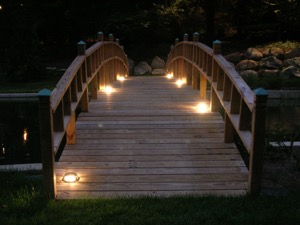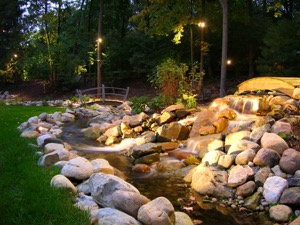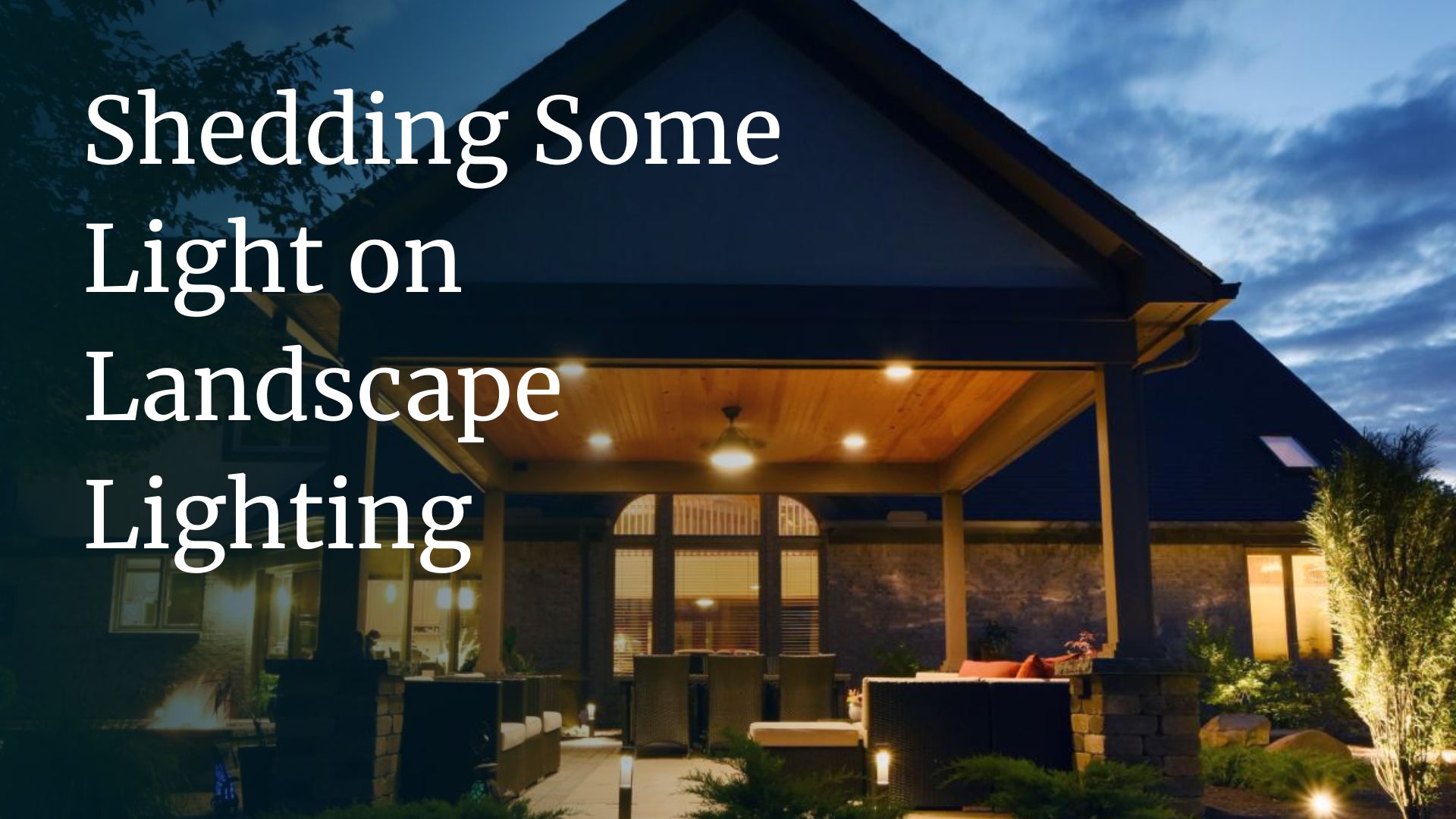 There are more reasons for you to include landscape lighting for your home’s exterior than meet the eye.
There are more reasons for you to include landscape lighting for your home’s exterior than meet the eye.
Take safety. The last thing most of us want is to have folks taking a header on our property and possibly hurting themselves. Nighttime increases the risk for such accidents. Clearly illuminating steps and walk entrances with attractive, functional landscape lighting can go a long way toward ensuring everyone’s personal safety.
Nighttime provides good cover for anyone with a little burglary on his or her mind. That’s another area where exterior landscape lighting can be extremely beneficial. Not only will strategic placement of accent lighting fixtures illuminate dark corners around your property discouraging anyone intent on breaking and entering, but it will also allow you to view your yard more clearly from inside and see who’s lurking about.
Beyond ensuring safety and providing security, well-planned exterior landscape lighting creates pockets of interest that can result in a dramatic, overall atmosphere for your home. With exterior lighting, you can create a visual path to your front door. Lighting can highlight structural architectural elements, such as fountains and sculptures, or landscape features, such as topiary. And lighting trees and shrubs can also help you frame your property and walkways in a welcoming context.
The key here is to hide the source of the light, so that what visitors and passers-by see is the effect of the lighting and not the lights themselves. And take care not to over-light your home; less is generally more.
Shed a Little Light on the Subject
There are five different methods of lighting at an angle. The first is called uplighting; architectural and landscape elements become very dramatic when you illuminate them from below. The reverse technique, called downlighting, involves placement of lighting fixtures above landscaping, walking paths, or other areas of special interest.
“We use downlighting wherever possible to create extra interest on plantings or walkways,” notes Ben Bayer of The Site Group in New Carlisle. “This technique removes the lamp to areas less likely to be disturbed. It also washes the ground naturally, and the bugs attracted to the heat are not at your level.
When mounting downlights in trees, The Site Group uses a special tree mounting bracket and stainless steel screws. They encase the wire in flexible conduit and strap it with special tie straps to allow for tree growth.
“We like to use a combination of uplighting and downlighting on the front of a residence,” Bayer explains. “It gives the homeowner different pockets of interest, natural light, and a clean-looking landscape during the day.”
 See the Light of Day…and Night
See the Light of Day…and Night
Then, there’s moonlighting. You can create shadows with lighting that rival nature’s own. For example, you can use downlighting out of trees, to produce a soft, natural effect similar to moonlight. Or you can also combine this type of downlighting with uplighting for an absolutely astounding effect.
Grazing involves using lighting to accentuate the texture of any surface. And silhouetting is a technique by which you backlight architectural elements, trees, or other objects so they stand out in front of a wall, fence, or other surface.
According to One’s Lights
Pathway lighting is a good news/bad news situation. It affords you lots of design options, due to its visibility during the day. Path fixtures are useful in certain applications, but – because of kids, balls, dogs, and poor staking methods – they can lean over time. And that can detract from the overall look of your property.
You can get more bang for your buck by using down-lights, rather than pathway fixtures; a properly placed downlight will do the work of one to four path fixtures. “When path fixtures must be used,” Bayer points out, “we use a high-quality copper, brass, or powder-coated aluminum with a heavy-duty 14” stake to keep them straight.”
A Sight for Sore Eyes
Exterior lamps are available in a wide range of color options. Incandescent lamps give off a warm, yellow light ideal for path fixtures. The white light of halogen lamps makes perfect spot lighting and flood accent fixtures. Mercury vapor lighting emits a blue-green light ideal for a natural looking, tree effect. The bright white of fluorescent light makes it best for lighting signs. And the orange-yellow light of high-pressure sodium lamps rocks as roadway lighting.
And color filters are available, to help you achieve certain looks, such as, for example, using blue filters on halogen lamps to create natural-looking tree lighting.




